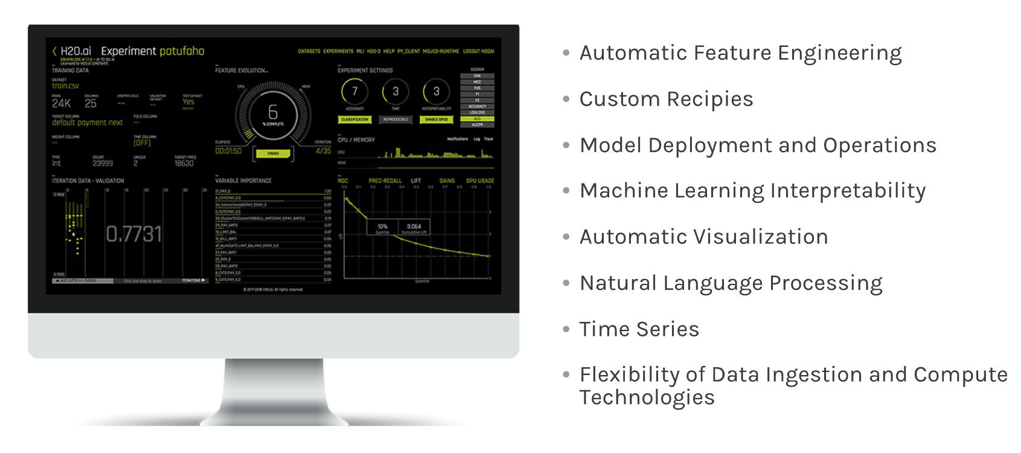
Detecting Money Laundering Networks Using H2O Driverless AI
Artificial Intelligence has evolved from being a buzz word to a reality today. It is making a positive impact on several industries, and the financial sector hasn’t been left untouched. The financial services industry is continuously innovating and advancing new technologies in the pursuit of increasing their customer base and finding new opportunities. This is happening across all segments from capital markets to commercial banking, and from consumer finance to insurance.
The use of AI in the financial industry is quickly changing the business landscape, even in traditionally conservative areas. Financial institutions today use artificial intelligence (AI) for scenarios like customer services, risk management, fraud detection, and anti-money laundering while adhering to regulatory compliance.
AI solutions have proved to be a boon when it comes to detecting Money Laundering and H2O.ai, the open source leader in AI, is empowering leading financial services companies to deliver AI solutions that help tackle such menace, effectively.
Note: Listen to a webinar on this topic here.
Traditional approaches for solving Money Laundering
Investigation teams have used rules-based systems like FICO, Fiserv, SAS AML, Actimize, etc. to find suspicious transactions. The steps involved in the current rule-based workflow are as follows:
- An alert is generated by the alerting system.
- The investigator reviews it using information from different sources.
- The alert is approved as True Positive or classified as False Positive.
However, rule-based systems have a large amount of false positives usually in the range of 75 – 99%. These rules can quickly become outdated thus producing large numbers of false positives that still need to be reviewed. Some of the drawbacks of using Rule-Based systems are:
How AI can address this issue
Anti Money Laundering (AML) programs in capital markets and retail banking extensively deploy Rule-based Transaction Monitoring Systems, spanning areas like monetary thresholds and money laundering patterns. Bad actors can learn these rules over time and change their methods to avoid detection. AI-based behavioral modelingand customer segmentation can be more effective in discovering transaction behaviors and identify behavioral patterns and outliers, indicating potential laundering.
AI, especially time series modeling, is particularly good at looking at a series of complex transactions and finding anomalies. Anti-money laundering using machine learning techniques can find suspicious transactions and networks of transactions. These transactions are flagged for investigation and can be scored as high, medium, or low priority so that the investigator can prioritize their efforts. The AI can also provide reason codes for the decision to flag the transaction. These reason codes tell the investigator where they might look to uncover the issues and help to streamline the investigative process. AI can also learn from the investigators as they review and clear suspicious transactions and automatically reinforce the AI model’s understanding to avoid patterns that don’t lead to laundered money.
Solving Anti-Money Laundering problem using Driverless AI
H2O Driverless AI is an Award-winning Automatic Machine Learning Platform that empowers data scientists to work on projects faster and more efficiently by using automation to accomplish key machine learning tasks in just minutes or hours, not months. H2O.ai’s AML solution uses Driverless AI as the modeling engine utilizing Driverless AI’s advanced feature engineering and model creation capabilities.
H2O.ai’s Anti Money Laundering (AML) system provides the following advantages over the rule-based system:
- Fundamentally reduces the False positives
- It has the ability to ingest recipes, customized for money laundering.
- The solution is strategically placed between the AML system and the investigator
- It classifies alerts as False Positives, or True Positive using an out-of-loop ML approach.
- A curated set of alerts are given to the investigator
The usual investigation time is reduced drastically from 45–90 days to seconds. It also reduces human inaccuracies and required person-hours. It fits rule-gaps with innovative features.
Conclusion
AI is critical to success in the financial services industry. Driverless AI enables financial services companies to build personalized banking experiences quickly, fraud and money laundering models, improve employee productivity, and more.
Take Driverless AI for a Test Drive on the cloud or in your own environment. Try it today!




























